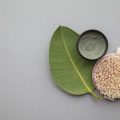1. Introduction: Hair Care in Indian Households
When it comes to personal grooming, nothing speaks more of tradition and family wisdom than home hair care across India. For generations, Indian households have cherished the ritual of nurturing hair with time-tested remedies, making it an integral part of daily life—especially in Western and Southern regions. But why is this tradition so deeply rooted? The answer lies in a unique blend of climate, culture, and the abundant local resources available. In the humid, coastal stretches of Southern India, coconut oil treatments are almost a weekly affair, passed down from grandmothers to grandchildren. In contrast, arid or semi-arid areas of Western India see households adapting their routines with different oils and natural ingredients suited for drier conditions. These regional differences aren’t just about geography; they’re shaped by community beliefs, festivals, and even local flora. Whether it’s using shikakai pods from the South or amla from the West, each region’s approach is a reflection of its people’s resilience and ingenuity. In this article, I’ll take you through my first-hand experiences trying out popular home hair care tips from both Western and Southern India—comparing rituals, results, and little secrets I picked up along the way.
2. Typical Hair Care Routines in Western India
When we talk about home hair care in Western India, especially in states like Maharashtra and Gujarat, it’s a real blend of tradition and practicality. Growing up in Pune, I’ve seen my family—especially the women—swear by age-old remedies passed down through generations. The typical routine here usually starts with a good champi (oil massage), something that’s almost a weekly ritual in most households.
Popular Oils and Their Benefits
| Oil Type | Main Benefit | How Its Used |
|---|---|---|
| Coconut Oil | Nourishment & Cooling Effect | Applied overnight before washing, sometimes mixed with hibiscus or curry leaves |
| Almond Oil | Strengthening & Shine | Light scalp massage, often combined with a few drops of vitamin E oil for extra softness |
| Castor Oil | Promotes Hair Growth | Used mainly on scalp edges or mixed with coconut oil due to its thick texture |
Commonly Used Herbs & Kitchen Ingredients
If you check any Gujarati or Maharashtrian kitchen, you’ll find ingredients doubling up as hair care solutions. Here’s what’s commonly used:
- Methi (Fenugreek) Seeds: Soaked overnight, ground into a paste, and applied to the scalp to tackle dandruff and promote growth.
- Amla (Indian Gooseberry): Used as juice or powder; rich in Vitamin C for strengthening roots.
- Curry Leaves: Boiled in coconut oil for hair darkening and preventing premature greying.
- Hibiscus Flowers/Leaves: Crushed and added to oil for silky hair.
- Yogurt: Applied as a mask for conditioning and soothing itchy scalp, especially during hot summers.
- Lemon Juice: Mixed with oils or yogurt to fight dandruff naturally.
A Sample Weekly Routine from a Maharashtrian Household:
| Day | Routine Step |
|---|---|
| Sunday | Coconut oil massage + fenugreek paste mask (wash off after 1 hour) |
| Wednesday | Mild shampoo + amla rinse + yogurt conditioner (15 minutes) |
| Friday | Curry leaves infused oil quick massage (30 minutes before wash) |
Personal Insight:
I’ve personally tried the coconut oil and methi combo during peak summer—results? Noticeably less itchiness and softer hair after just two weeks. Most men around me prefer almond oil for non-greasy shine on workdays. In short, home remedies here are practical, easy to whip up from kitchen staples, and deeply rooted in our culture.

3. Southern Indias Signature Hair Rituals
When you talk about hair care in South India, it’s a different ball game altogether. Down here in Tamil Nadu, Kerala, and Karnataka, the tradition of weekly oil baths is almost sacred—something I personally experienced during a visit to a friend’s home in Chennai. Every Saturday, the household comes alive with the aroma of freshly warmed coconut or sesame oil. The head massage isn’t just relaxing; it’s believed to cool the body and strengthen the roots. Trust me, after a few sessions, my scalp felt way healthier and my hair shinier than ever before.
Another staple is the use of curry leaves. My host’s mother would pluck fresh leaves from their backyard, blend them with coconut oil, and apply this green concoction to our hair. Curry leaves are not just for flavouring sambar—they’re packed with nutrients that help prevent premature greying and promote growth. Honestly, after sticking with this routine for a couple of weeks, I noticed fewer strands on my comb.
Hibiscus flowers and leaves are another local favourite. Whether it’s hibiscus-infused oil or a paste made from its petals, the results are pretty impressive. The flower is known to condition the hair and keep dandruff at bay—a real boon in the humid South Indian climate. My own experiment: crushing hibiscus petals and mixing them with curd for a simple hair pack left my hair feeling softer and bouncier.
Let’s not forget natural hair packs—these homespun recipes are passed down through generations. In Kerala, I tried a mix of amla powder, fenugreek seeds, and yoghurt as a mask. It was messy but effective; my hair had this unmistakable volume and sheen afterwards.
In summary, Southern India’s approach to home hair care is rooted in Ayurveda and nature—using what’s locally available, whether it’s curry leaves from the garden or hibiscus flowers from the neighbour’s fence. For anyone serious about healthy hair (and willing to put in some effort), these rituals are worth adding to your weekly routine—even if you have to adapt them to your own city apartment lifestyle.
4. Key Differences and Regional Influences
When it comes to home hair care, the experiences in Western India and Southern India are shaped by unique regional factors—from climate to traditional preferences. During my own testing across both regions, I noticed some clear differences, especially when comparing textures, oil choices, washing habits, and how local weather patterns like monsoons or dry summers impact routines.
Hair Texture: West vs South
| Region | Common Hair Texture | Cultural Attitude |
|---|---|---|
| Western India (Maharashtra, Gujarat) | Mostly wavy to straight, medium thickness | Preference for manageable, frizz-free hair; often short to medium length |
| Southern India (Kerala, Tamil Nadu) | Thick, dense, and often curly or coily | Pride in thick, long hair; traditional value placed on natural volume |
Preferred Oils & Ingredients
In Western India, lightweight oils like almond or even blends with argan are trending among urban folks. Meanwhile, coconut oil is king in the South—almost every household has a bottle of pure coconut oil ready for weekly massages. Some families in Kerala even prepare their own herbal-infused oils using curry leaves or hibiscus.
Popular Oils by Region:
| Region | Main Oils Used | Why Locals Prefer Them? |
|---|---|---|
| Western India | Almond oil, Argan oil, Light coconut blends | Lighter feel, less greasy, suitable for hot/dry weather |
| Southern India | Pure coconut oil, Herbal-infused coconut oil (with curry leaves, fenugreek) | Nourishes thick hair, promotes growth, cools scalp in humid climate |
Frequency of Hair Washes & Routines
If you ask around in Mumbai or Pune, most people prefer washing their hair 2-3 times a week due to pollution and sweat but use less oil before shampooing. Down South, especially during the monsoon or peak summer humidity, I found many still follow the age-old routine: heavy oiling followed by a herbal or shikakai wash once a week. For daily freshness, they might rinse with just water or use mild herbal powders.
Typical Wash Frequency:
| Region | No. of Washes Per Week (Avg.) | Usual Routine Elements |
|---|---|---|
| Western India | 2-3 times/week | Mild shampoo; occasional conditioner; pre-wash light oiling if any |
| Southern India | 1 main wash/week (+ water rinses as needed) | Heavy oil massage night before; herbal powders/shikakai for cleansing; air drying preferred over blow-drying |
The Impact of Monsoons & Dry Summers on Hair Care Habits
The weather really sets the tone for home hair care. In Western India’s dry summers (especially in Gujarat), dehydration leads to split ends and frizz—people switch to hydrating serums and avoid heat styling. Monsoon brings extra humidity and scalp issues like dandruff; anti-fungal herbal rinses become popular.
In contrast, Southern India’s year-round humidity means more focus on scalp cooling and detangling. The monsoon is actually the season for intense oil massages—to fight frizz and strengthen roots against the constant dampness.
Regional Weather Effects at a Glance:
| Region/Season | Main Challenge(s) | Tried-and-Tested Solutions |
|---|---|---|
| Western India – Summer | Dullness, breakage from dry air | Avoid overwashing; use leave-in conditioners; protect from sun |
| Western India – Monsoon | Dandruff, greasy scalp | Mild anti-fungal herbal rinses; keep scalp clean and dry |
| Southern India – Year-round Humidity/Monsoon | Tangles, frizz, weak roots | Coconut oil massages; wide-tooth combs; air dry after washes |
The bottom line? Whether you’re from Mumbai or Madurai, your home hair care routine will always be influenced by what’s around you—weather, tradition, family tips—and a little bit of trial-and-error based on your own mane’s mood.
5. My Personal Experience: Testing Both Regimes
As a guy who has travelled across India for both work and leisure, I’ve always been curious about the regional differences in home hair care routines. So, when I recently spent a few months splitting time between Pune in Maharashtra and Kochi in Kerala, I decided to put the popular hair care tips from both Western and Southern India to a real test. Here’s my first-hand account of what it was like following these two very different regimes.
Sourcing Ingredients
In Western India, especially around Pune and Mumbai, ingredients like amla powder, shikakai, reetha, and coconut oil are easily available in every kirana shop or local market. Many people use ready-made oils and herbal powders, which made starting the regime hassle-free for me. The vibe is more about convenience—quick champi with Parachute coconut oil or some branded ayurvedic hair mask from D-Mart.
When I reached Kerala, the approach felt more rooted and natural. Fresh hibiscus leaves, curry leaves, aloe vera, and pure coconut oil (pressed at the local mill) were staples. It wasn’t hard to source these either—every aunty seemed to have a kitchen garden! But making your own concoctions from scratch did take more time and effort compared to picking up a bottle from a shelf in the West.
Trying Out The Regimes
I began with Western India’s routine: massaging scalp with warm coconut oil mixed with amla powder thrice a week, followed by washing with shikakai-reetha mix. My hair felt lighter, less oily and surprisingly voluminous after just two weeks. The process was straightforward and took about 30 minutes per session.
Switching to the Southern style in Kerala was an entirely different ball game. Here, I crushed fresh hibiscus flowers and curry leaves into a paste, mixed with homemade coconut oil, and applied it overnight before rinsing off with rice water or mild herbal shampoo. My hair definitely became softer and had a natural sheen. However, preparing these mixtures required more patience and commitment—sometimes over an hour including sourcing fresh ingredients.
Effectiveness & Observations
If you want instant results with less fuss, Western Indian methods win hands down for practicality—especially if you’re busy or not keen on elaborate prep. But honestly, nothing beats the deep conditioning of the Southern routine; my scalp felt healthier and dandruff reduced noticeably within a month.
Both styles have their merits. Western India gives you easy fixes using traditional powders and oils while South Indian practices offer deep nourishment but demand dedication. For me, combining elements of both based on season and mood has become my go-to strategy.
6. Home Hair Care: Common Myths and Modern Tweaks
Growing up in Pune, my family swore by applying coconut oil overnight for thicker hair. But when I moved to Bengaluru for college, my roommates told me this was “old-fashioned”—they preferred lighter oils like almond or even serums. This made me realise how regional hair care myths still dominate home routines in both Western and Southern India, but the younger generation is adding their own twists.
Debunking Regional Hair Care Myths
Coconut Oil: Miracle or Overhyped?
In the South, coconut oil is almost sacred—applied generously before every wash. In the West, it’s used too, but not always with the same religious fervour. Some say it cures dandruff and stops hair fall overnight. The reality? Dermatologists now say coconut oil is good for conditioning and reducing protein loss, but it won’t magically solve all scalp issues. Excessive use can actually clog pores for some people.
Shikakai & Reetha: The Only Cleansers?
My Maharashtrian aunties believe shikakai is the only way to clean hair without chemicals, while my Kannadiga friends mix reetha (soapnut) for extra foam. Younger folks now blend these powders with mild shampoos, finding a balance between tradition and convenience. The myth that herbal cleansers alone are enough doesnt always hold up—especially against city pollution.
Modern Tweaks: How Gen Z Is Adapting
Mixing Oils with Serums
Younger Indians are combining grandma’s oils with modern serums—coconut oil for scalp massage, serum for post-wash shine. Brands like Parachute and Streax have started offering hybrid products catering to this trend.
Hair Masks: From Kitchen to Store Shelf
The old practice of using curd or egg masks still exists in many homes. Now, it’s common to see store-bought masks containing similar ingredients but easier to use—perfect for busy urban lifestyles in Mumbai or Hyderabad.
The Verdict from Both Regions
Whether you’re from Gujarat or Tamil Nadu, one thing’s clear: myths about magical ingredients persist, but practical adaptations are everywhere. Combining traditional wisdom with a dash of science-backed products seems to be the way forward among today’s youth.
7. Conclusion: What Works Best for You?
After comparing home hair care routines from Western and Southern India, it’s clear that both regions have unique strengths shaped by their climate, local traditions, and daily lifestyle. In the humid coastal belt of Kerala or Karnataka, regular oiling with coconut oil and gentle herbal washes work wonders against frizz and dryness. Meanwhile, in the drier climes of Gujarat or Maharashtra, lighter oils like almond or argan paired with deep conditioning masks help maintain moisture balance without making hair greasy.
From my personal experience traveling between Mumbai and Chennai, what matters most is adapting your hair care to your environment and individual hair type. For curly or wavy hair common in the South, frequent hydration and mild cleansers are key. If you have straighter or finer hair as often found in the West, focusing on scalp health and lightweight nourishment delivers best results.
Ultimately, there’s no single “Indian” method that fits all. Take cues from regional wisdom—like using hibiscus from the South or amla from the West—but experiment to find what suits your routine and budget. Remember, consistency beats fancy products every time. Whether it’s a weekly hot oil champi or a simple herbal rinse, choose methods that are practical for your lifestyle and give your hair the love it deserves.


